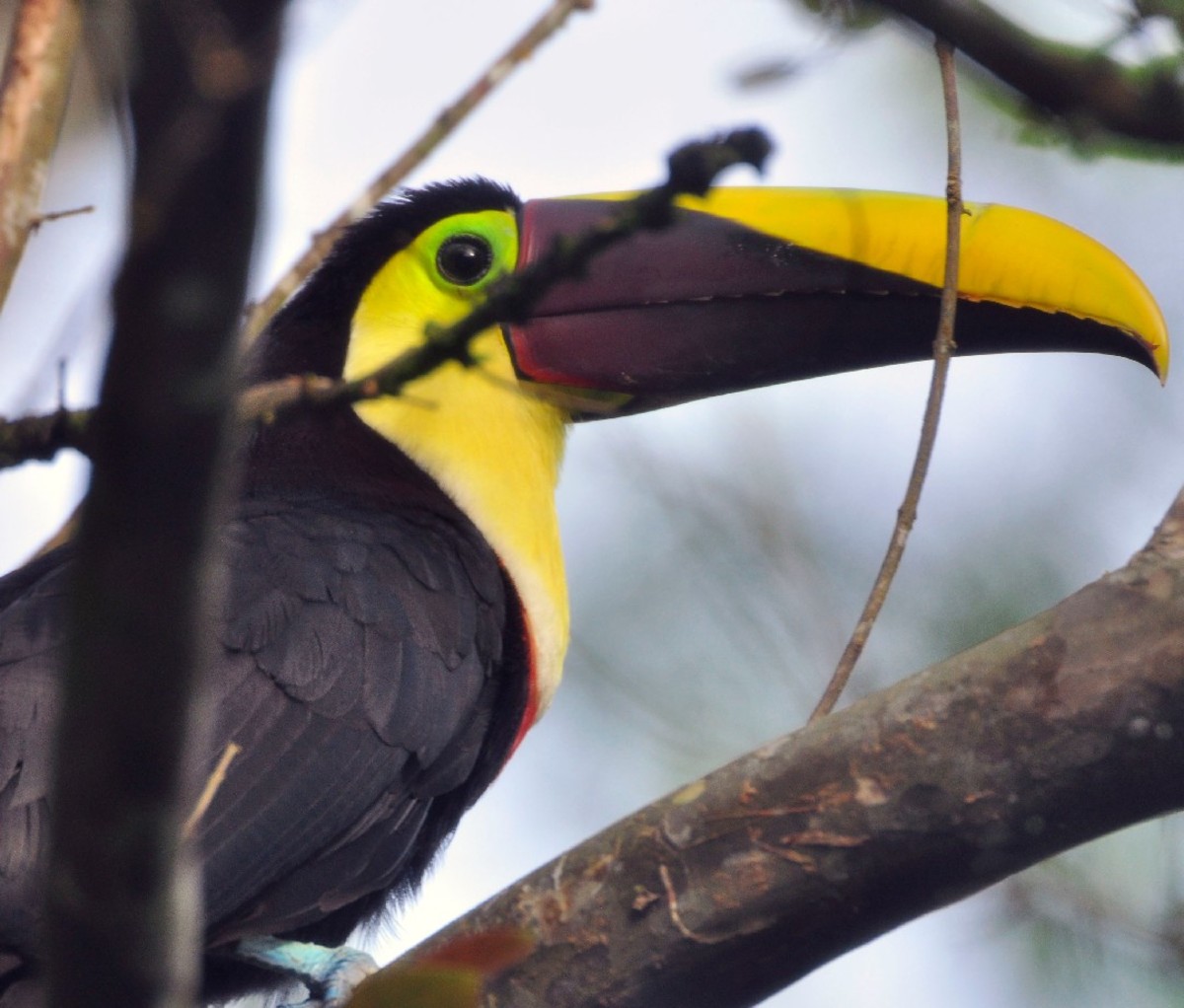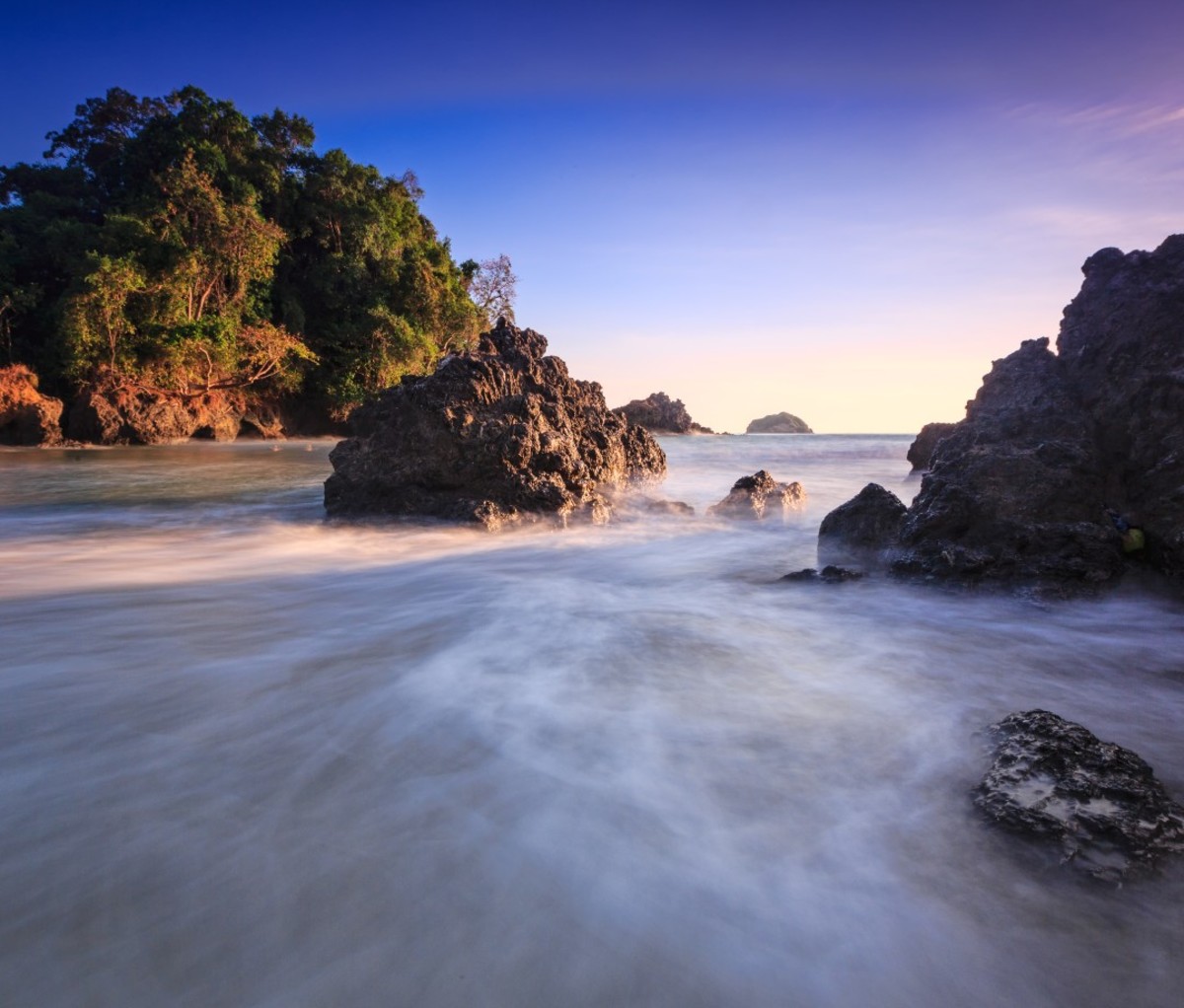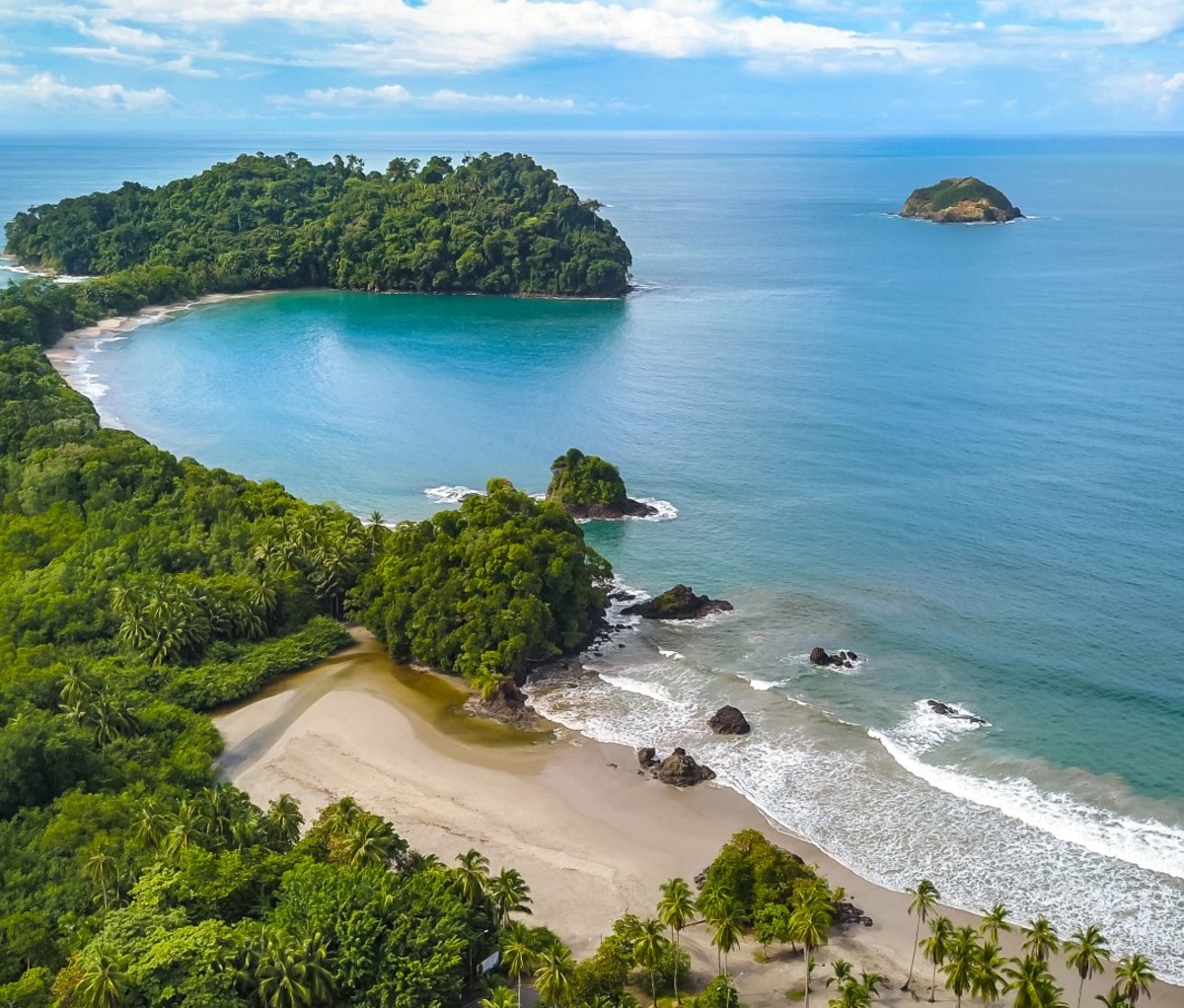Manuel Antonio may be the smallest national park in Costa Rica, at just under eight square miles—but it’s big, big, big in biodiversity. In fact, with more than 100 mammal and 180 bird species, it’s one of the most biodiverse areas in the world. A four-hour drive from the capital of San Jose, the park serves up a charming combination of pristine rainforest and some of the most beautiful beaches lining the country’s Pacific coastline. A short walk here unveils everything from sloths and moths to tree frogs and toucans—followed up by a heavenly plunge in the emerald-green Pacific.
Consider our recent jaunt there in November, which we added onto a week-long paddling itinerary whipped up by Amazing Vacations Costa Rica.
“It’s by far my favorite national park in all of Costa Rica,” says company founder Jason Tonioli, whose outfit specializes in trips to the country. “It has incredible jungle and wildlife—and then you get to hang out on one of the most beautiful beaches in the world.”

Reptiles & Rivers
Shuttling us from our hotel in San Jose in a comfortable van is Gustavo and our lead guide, Arnaldo. Stop number one: Fresh mango and pineapple smoothies at a roadside stand, which we sip while walking across a bridge over the Rio Tarcoles to see crocodiles sunbathing below.
“Don’t worry,” says Arnaldo, “there won’t be any where we’re paddling.”
We pass through the surf towns of Jaco and Quepos, stopping at a beach overlook with a plaque of the Costa Rican Olympic Surf Team that competed in Japan. We’re in total surf country, but on our way to run rivers—only in Costa Rica.
Passing towering Guanacaste trees standing sentry over rice fields (they’re Costa Rica’s national symbol, also called “elephant’s ear” for their seedpods), we soon arrive at the Hotel Manuel Antonio at the end of the road in the town of the same name. Located on a jungle-lined beach, it abuts Manuel Antonio National Park which is just a short walk away. We walk on the beach and swim, followed by a sunset cacique cocktail (featuring local sugar cane) and a delicious carne asada dinner.
In the morning, we stroll to the park’s entrance and meet our guide, Andre—quickly confirming the benefit of taking a guided tour versus going it alone. A few steps into the tour, our equipped guide sets up his Swarovski spotting scope on a tripod to reveal the stick-like head of a snake (a non-venomous coachwhip) protruding branchlike from a vine. A few steps later, he whips it out again and dials in a tiny bat clinging to the underside of a giant leaf.

Rainforest Revelations
The guides here work together—radioing back and forth to inform each other where the prize wildlife is hiding. How else could one explain how Andre easily points out the tiny, red eye of a tree frog? A few steps later, he spots the frogs’ sparkly, waterdrop-like eggs clinging from a vine. A turn farther on and it’s a Jesus Christ lizard next to a creek—so named for its ability to run across water.
Andre continues to point out an amazing array of insects, flora and fauna we would’ve otherwise missed, explaining everything from their symbiotic relationship with other plants and animals to survival mechanisms even Darwin would be hard-pressed to discern. Of course, we also spy plenty of bigger critters, from Jurassic Park-like iguanas and slovenly two-toed sloths to squirrels and whiteface monkeys—beelining for visitors’ backpack zippers. The sloths, we learn, play host to as many as 100 different types of insects in their fur who get affordable housing in return for cleaning duties. The meddlesome monkeys, meanwhile, are even smart enough to rub themselves with poisonous millipedes to evade predators.
Andre gets most excited when we spot the elusive toucanet, a smaller toucan whose beak is still the size of Andre’s grin. “This is very special,” he enthuses. “This is the first time I’ve seen one all year.”

Beach Bliss
At the end of the tour, after Andre bids us adieu and we hike a few more trails on our own, we’re turned loose at a trio of spectacular beaches—one ranked among the most beautiful playas in the world. After refueling on the sand with a quick snack, we hike a trail that winds around the forest-topped cliffs of Punta Catedral—once an island but now connected to the coast by a thin strip of island.
The land bridge forms a spine separating the park’s two most striking beaches, Playa Espadilla Sur and Playa Manuel Antonio—a half-mile-long white sand crescent bisecting green jungle to one side and a secluded cove on the other. After exploring the isthmus, we take the plunge and savor a refreshing swim in the ocean.
Monkeys, sloths, frogs, iguanas, snakes, toucans, pelicans, hummingbirds, and now a dip in the emerald waters of the Pacific. How many national parks offer that?

Park Beta
The park is open year-round, every day except Tuesdays, from 7 a.m. to 4 p.m. Entrance tickets can only be purchased online. Group guided tours are available at $65 for adults, $50 for children (private tours: $75/adults, $60/children), including round-trip transportation from area hotels and vacation homes, entrance fee, bilingual certified guides with telescopes, and time to spend at the beaches. Hint: Beware of scammers trying to sell overpriced parking and tours near the park entrance.
Getting There
Manuel Antonio National Park is located 165 kilometers from San Jose on the Pacific Ocean (about a four-hour drive). Domestic flights, five daily between San Jose and Quepos, cost $75-$95 one-way.
Park Tip
Go with a guide. They’re experts, know the animals’ habits, and where they are in the park. You’ll see way more wildlife, thanks to their expertise and high-powered spotting scopes, and learn interesting facts about both the flora and fauna. Bonus: you can take beautiful close-up photos with your smartphones through their scopes.
Other Things to Do
River running
Book a trip on one of three rivers that dump into the Pacific nearby—including the family-friendly, jungle-lined Sevegre. Step-it-up-a-notch on the Class III-IV Naranjo or, if it’s running, the creek-like Guavo which you can paddle right into the ocean.
Waterfall plunging
Take a side trip to “Cataratas Nauyaca,” one of Costa Rica’s top waterfalls, where a steep, hour-long hike leads to a massive, two-tiered bridal veil worth every drop of sweat for the plunge into the avocado-green plunge pool at the bottom. Tip: Swim behind the veil at looker’s left.
Surfing
Tack on a day or two and hit the waves at Manuel Antonio or the nearby surf towns of Jaco, Quepos, or Domincal, which serve up shore break for short boarders and points for long boarders. Hint: Longboarders, try Domincalito a mile down the kiosk-lined boardwalk from Domincal.
from Men's Journal https://ift.tt/3FCvPHK





0 comments